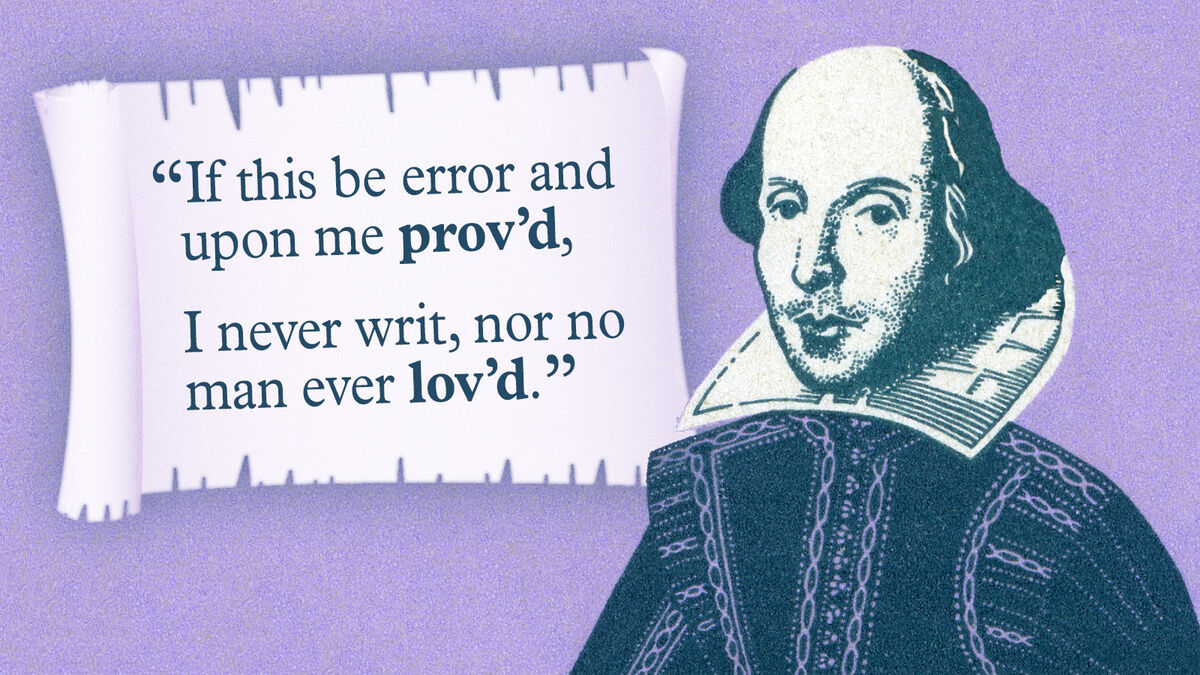
Elision is when a writer or speaker leaves out unstressed syllables or other sounds in a word. The best way to understand this concept is with elision examples from literature and real life.
What Is Elision?
Elision means leaving something out. Usually, the omitted thing is a sound in a word, resulting in a shorter version of that word. In most cases, the sound that’s omitted is not a stressed syllable, making this a popular way for poets to conform to a set meter in their poems.
Elision differs from ellipsis. Ellipsis involves leaving out a word or multiple words, while elision is only leaving out a sound.
Elision Examples in Everyday Language
If you know what to listen for, you can hear elision in real life speech. Here are a few common examples:
- cam-ra for “camera”
- dunno for “don’t know”
- kinda for “kind of”
- choc-late for “chocolate”
- asp-rin for “aspirin”
- hist-ry for “history”
- temper-ture for “temperature”
- math-matics for “mathematics”
- fam-ly for “family”
You’ll often hear elisions in colloquial language or casual speech. When elisions appear in writing, they are more intentional and noticeable. Often, the writer replaces the elision with an apostrophe.
Elision Examples From Poetry
In literature, particularly in poetry, elision plays an important role in helping the writer maintain a meter or pattern of stressed and unstressed syllables. Eliminating a sound can help the writer follow the pattern.
Sonnet 116 by William Shakespeare
In Sonnet 116, William Shakespeare uses elision to help the sonnet keep its strict rhythm of iambic pentameter. This is particularly noticeable in “wand’ring,” “prov’d,” and “lov’d”:
Let me not to the marriage of true minds
Admit impediments. Love is not love
Which alters when it alteration finds,
Or bends with the remover to remove.
O no! it is an ever-fixed mark
That looks on tempests and is never shaken;
It is the star to every wand'ring bark,
Whose worth's unknown, although his height be taken.
Love's not Time's fool, though rosy lips and cheeks
Within his bending sickle's compass come;
Love alters not with his brief hours and weeks,
But bears it out even to the edge of doom.
If this be error and upon me prov'd,
I never writ, nor no man ever lov'd.
I Wandered Lonely As a Cloud by William Wordsworth
Wordsworth also uses elision to help maintain his meter of iambic tetrameter in I Wandered Lonely as a Cloud. In the first stanza, he reduces “over” to a single syllable with the elision of the “v”:
I wandered lonely as a cloud
That floats on high o'er vales and hills,
When all at once I saw a crowd,
A host, of golden daffodils;
Beside the lake, beneath the trees,
Fluttering and dancing in the breeze.
Ode to a Nightingale by John Keats
Poets don’t always use elision to maintain meter. Sometimes, it can lend a more casual tone or allow the poet to start a line with a consonant instead of a vowel, as in Keats’ use of “‘Tis” in the first stanza of Ode to a Nightingale:
My heart aches, and a drowsy numbness pains
My sense, as though of hemlock I had drunk,
Or emptied some dull opiate to the drains
One minute past, and Lethe-wards had sunk:
'Tis not through envy of thy happy lot,
But being too happy in thine happiness,—
That thou, light-winged Dryad of the trees
In some melodious plot
Of beechen green, and shadows numberless,
Singest of summer in full-throated ease.
Elision Examples From Prose
Elision isn’t as common in prose as it is in poetry, but there’s one area you see it frequently. That’s when the writer is using elision to convey the dialect of speech to the reader.
To Kill a Mockingbird
In To Kill a Mockingbird, Harper Lee uses elision to communicate the dialect of the characters, which involves leaving off the “g” in “ing” endings:
You ain’t sendin’ me home, missus. I was on the verge of leavin’ ---- I done my time for this year.
Bleak House
Charles Dickens relied on dialect to add dimension to his characters, and some of it involved elision. You can see how he left out the “t” in “gentlemen” in this example from Bleak House:
Different times there was other genlmen come down Tom-all-Alone's a-prayin, but they all mostly sed as the t'other 'wuns prayed wrong, and all mostly sounded to be a-talking to theirselves, or a-passing blame on the t'others, and not a-talkin to us.
The Adventures of Tom Sawyer
In The Adventures of Tom Sawyer, Mark Twain uses elision in writing the dialogue in the appropriate dialect for the place, time, and social standing of the characters. Here, Tom says “gimme” instead of “give me.”
Oh, never you mind what she said, Jim. That’s the way she always talks. Gimme the bucket – I won’t be gone only a minute. She won’t ever know.
Using Apostrophes for Elisions
If you’re considering writing elisions in poetry or prose, brush up on the rules for apostrophes. In some cases, you may need to add an apostrophe to make your meaning clear to the reader.